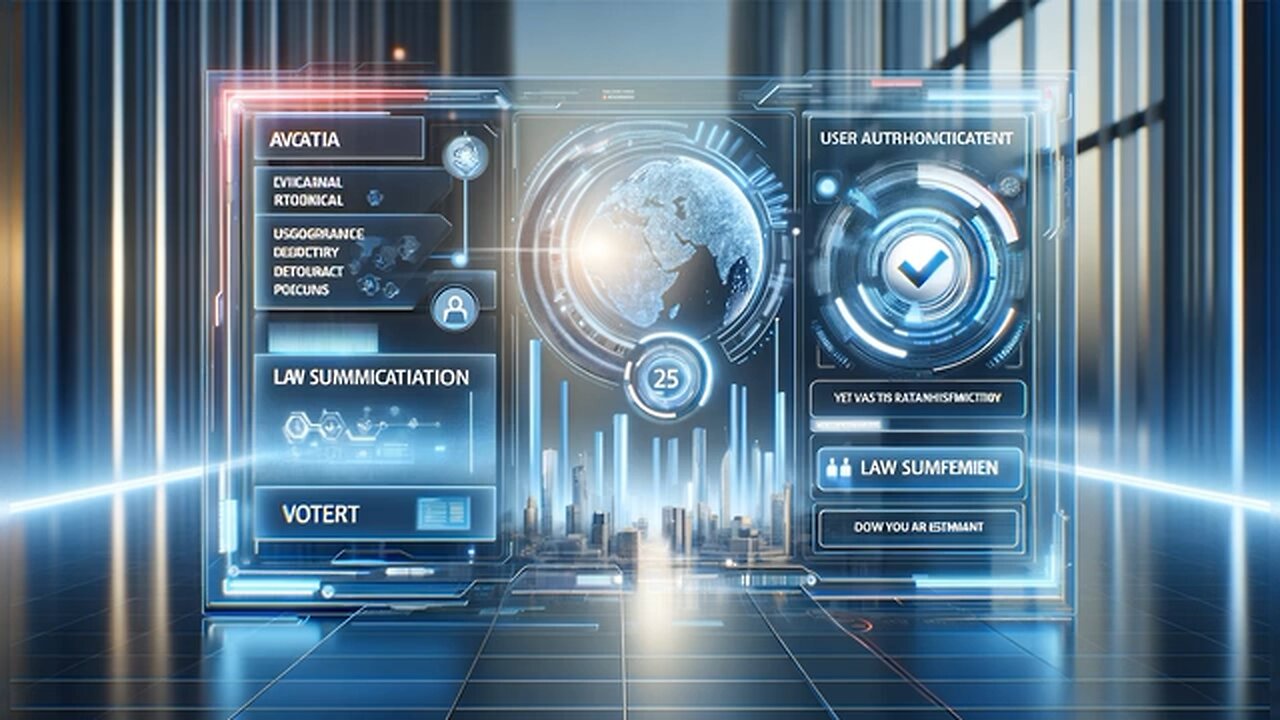Premium Only Content

Here is a refined and comprehensive compilation of bullet statements detailing every aspect of the Citizens Ratification Branch (CRB) and the Citizens Ratification Amendment (CRA):
Citizens Ratification Branch (CRB) Overview
Structured Ratification Process: Specifies a structured process for ratifying laws, ensuring continuous citizen engagement.
Monthly Ratification: Conducts votes on the first day of each month to facilitate ongoing citizen participation.
Ratification and Unratification Criteria:
Immediate Removal for New Laws: Unratified new laws are removed from the legal framework immediately.
Gradual Removal for Existing Laws: Informs citizens via the CRB portal and removes laws after sustained unratification over three months.
Legislative Responsiveness: Repromulgation of unratified laws is allowed, potentially with modifications.
Certification by Officials: Ratification results are certified by CRB officials under oath.
Forensic Auditing: Monthly audits by private companies ensure adherence to procedures.
Technological Support: Utilizes advanced technology to enhance secure and efficient citizen participation.
Innovation in Governance: Aims to revolutionize governance by making it more accessible and responsive, akin to innovations by Elon Musk.
Direct Citizen Engagement: Allows direct citizen input in legislative processes with full transparency.
Responsive to Public Opinion: Modifies laws based on citizen feedback, akin to iterative product development.
Future-Ready Governance: Ensures the legislative framework is adaptable to emerging societal needs.
Citizens Ratification Amendment (CRA) Framework
Amendment History and Process:
The U.S. Constitution has been amended 27 times, reflecting a rigorous amendment process.
Amendments can be initiated by Congress or a State Convention.
CRA Strategy:
Preferred Path: Seeks amendment through a congressional joint resolution.
Probable Path: More likely to proceed via a convention called by state legislatures.
Dual Approach: Pursues both paths simultaneously, engaging community support.
Specific Amendment Provisions (28th Amendment):
Establishes the CRB with full ratification powers and details the unratification process.
Ensures CRB operations are independent, with a focus solely on ratification.
Stipulates that funding includes $100 per citizen vote and interest-free loans from Congress.
Requires transparent reporting and auditing of ratification outcomes.
Specifies that CRB leadership includes a Director appointed by the President.
Technological and Organizational Enhancements
Universal Accessibility: Proposes a user interface accessible on various devices, ensuring inclusivity.
Partnerships for Advancement: Collaborates with universities on AI and quantum computing.
Democratic Oversight: Positions the CRA as a mechanism for democratic oversight without changing the governmental structure.
Governance and Operational Funding: Outlines a non-profit governance structure with specific administrative roles and funding guidelines.
These statements provide a detailed view of the operational, strategic, and technological dimensions of the CRB and CRA, underscoring their commitment to enhancing democratic engagement and governance transparency.
-
 LIVE
LIVE
The Bubba Army
21 hours agoBURN The FLAG, Go to JAIL! - Bubba the Love Sponge® Show | 8/26/25
5,673 watching -
 12:15
12:15
Nikko Ortiz
17 hours agoMonday Gun Fails
55K11 -
 8:19
8:19
MattMorseTV
16 hours ago $10.48 earnedTrump is ACTUALLY DOING IT.
52.7K46 -
 5:40
5:40
Sugar Spun Run
23 hours ago $0.80 earnedNutella Brownies
4.1K -
 8:46
8:46
Faith Frontline
15 hours agoBill Maher STUNNED as Charlie Kirk Proves God Exists
3.76K9 -
 LIVE
LIVE
FyrBorne
9 hours ago🔴Warzone M&K Sniping: On the Hunt For The Next Fun Builds
87 watching -
 7:11
7:11
MudandMunitions
12 hours agoNY Legal, Still LETHAL! Colt M4 + Griffin Armament GPS3X Prism Sight! NIGHT SHOOT
2.55K3 -
 2:11
2:11
WildCreatures
2 days ago $0.47 earnedBrilliant Blue Hyacinth Macaw Eats Nuts With Impressive Dexterity
4.52K5 -
 29:45
29:45
DeVory Darkins
15 hours ago $5.04 earnedDemocrat Governor suffers EMBARRASSING LOSS to Trump as ICE takes Garcia into custody
8.99K59 -
 24:50
24:50
Bitcoin.com
15 hours agoEthereum hit an ATH this weekend | The Weekly Recap for Aug 25
8.44K